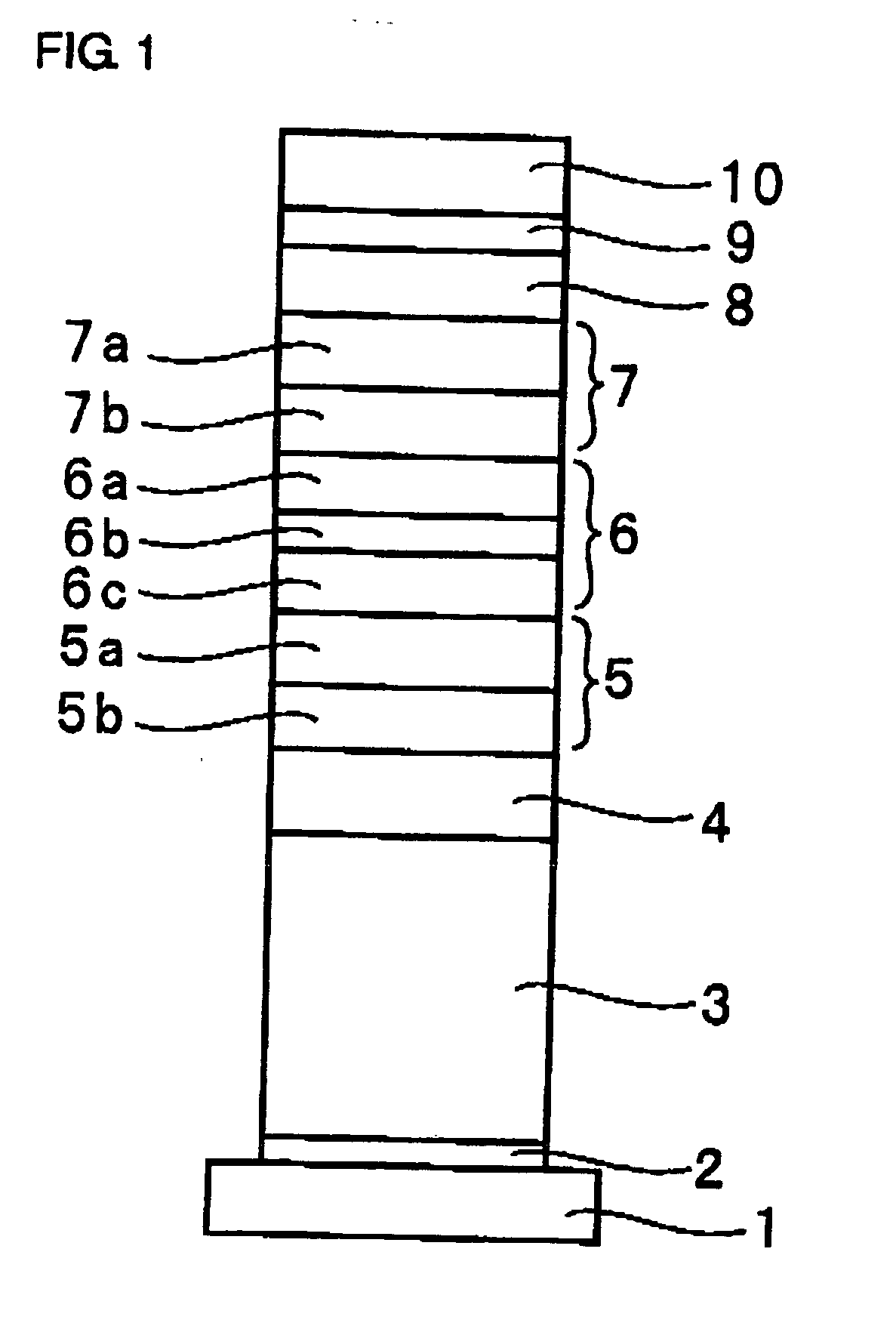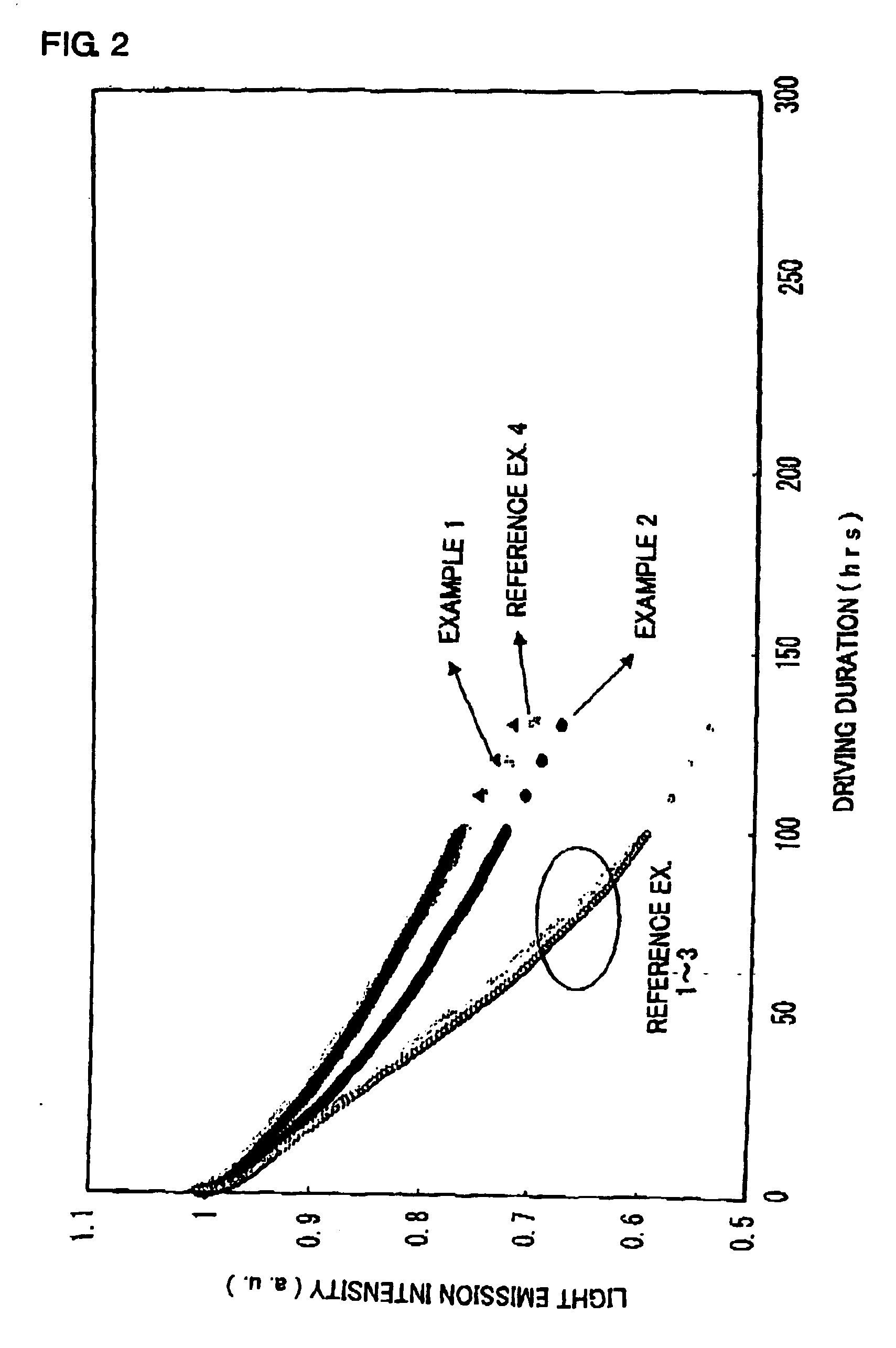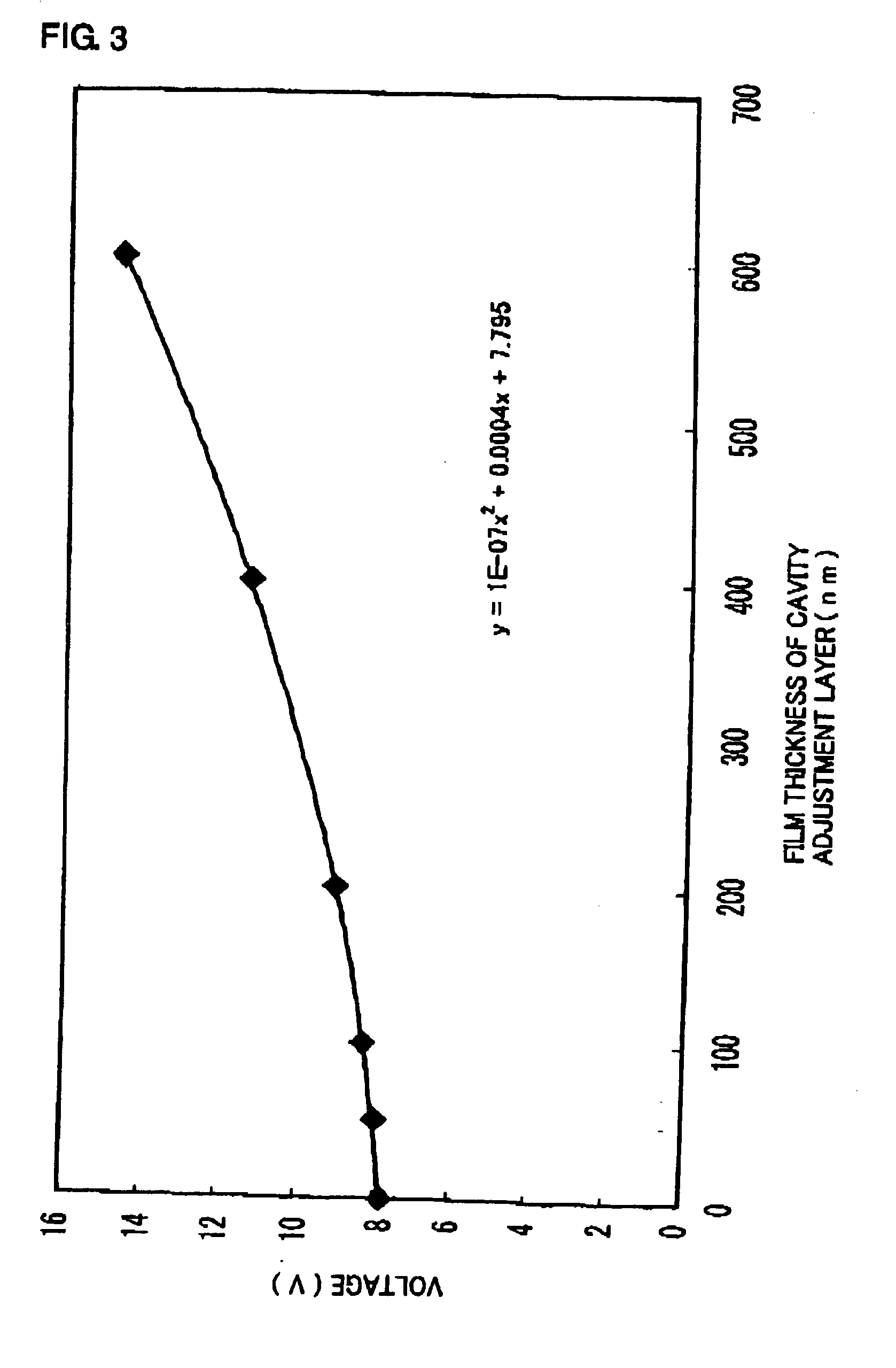Organic electroluminescent element and organic electroluminescent display device
- Summary
- Abstract
- Description
- Claims
- Application Information
AI Technical Summary
Benefits of technology
Problems solved by technology
Method used
Image
Examples
examples 1 to 7 and reference examples 1 to 5
[0137] Organic EL elements of Examples 1 to 7 and Reference Examples 1 to 5 having the structure described with reference to FIG. 1 were fabricated. The compositions of the respective layers are as shown in Table 1.
TABLE 1SecondFirstHoleElectronCavityElectronInjectingExtractingAdjustmentExtractingFirst Light EmittingAnodeLayerLayerLayerLayerUnitIntermediate UnitITOCFxAs ShownAs ShownAs ShownNPB +TBADN +BCPLi2OHAT-in Table 2in Table 2in Table 220%10%(15)(0.5)CN6TBADN +NPB +(20)3% DBzR2% TBP(60)(50)ElectronElectronTransportingInjectingSecond Light Emitting UnitLayerLayerCathodeNPB +TBADN +BCPLiFAl20% TBADN +10% NPB +(15)(1)(200)3% DBzR2% TBP(60)(50)
[0138] A fluorocarbon layer, which is a hole injecting layer, was formed by plasma polymerization of CRF3 gas. The thickness of the fluorocarbon layer was adjusted to be 1 nm.
[0139] The cavity adjustment layer was formed using NPB, as shown in Table 2. NPB is N,N′-di(naphthacen-1-yl)-N,N′-diphenylbenzidine and has the following structure...
example 17
[0207]FIG. 9 is a schematic cross-sectional view showing an organic EL element fabricated in this example. In the organic EL element of this example, as shown in FIG. 9, a metal thin film 81 of Al is formed on a substrate, which is not illustrated and a transparent conductive film 82 (film thickness of 30 nm) of an ITO (indium tin oxide) film was formed thereon. A reflective electrode is composed of the transparent conductive film 82 and the metal thin film 81 and the upper surface of the metal thin film 81 is to be the reflection surface 41a.
[0208] A hole transporting layer 91 (film thickness of 30 nm) of NPB is formed on the transparent conductive film 82. The hole transporting layer 91 works as a first cavity adjustment layer.
[0209] An orange emitting layer 51 (film thickness of 60 nm) and a blue emitting layer 52 (film thickness of 50 nm) are layered in this order on the hole transporting layer 91. The first light emitting layer 50 is a white emitting layer composed of the ora...
PUM
| Property | Measurement | Unit |
|---|---|---|
| Fraction | aaaaa | aaaaa |
| Fraction | aaaaa | aaaaa |
| Fraction | aaaaa | aaaaa |
Abstract
Description
Claims
Application Information
 Login to View More
Login to View More - R&D
- Intellectual Property
- Life Sciences
- Materials
- Tech Scout
- Unparalleled Data Quality
- Higher Quality Content
- 60% Fewer Hallucinations
Browse by: Latest US Patents, China's latest patents, Technical Efficacy Thesaurus, Application Domain, Technology Topic, Popular Technical Reports.
© 2025 PatSnap. All rights reserved.Legal|Privacy policy|Modern Slavery Act Transparency Statement|Sitemap|About US| Contact US: help@patsnap.com



